(Part of the How to Talk to a Global Warming Skeptic guide)
Objection: One hundred and some years of global surface temperatures is not long enough to draw any conclusions from or worry about anyway.
Answer: The reliable instrumental record only goes back 150 years in the CRU analysis, 125 in the NASA analysis. This is a simple fact that we are stuck with. 2005 was the warmest year recorded in that period according to NASA, a very close second according to CRU. Because of this limit, it is not enough to say today that these are the warmest years since 150 years ago, rather one should say ‘at least’:
1998 and 2005 are the warmest two years in at least the last 150.
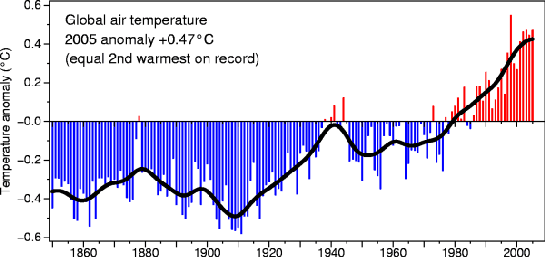
But there is another direct measurement record available that can tell us things about temperature over the last 500 years, and that is borehole measurements. This involves drilling a deep hole and measuring the temperature of the earth at various depths. It gives us information about century-scale temperature trends, as warmer or cooler pulses from long term surface changes propagate down through the crust.
Using this method we can see that temperatures have not been consistently this high as far back as this method allows us to look. This way of inferring surface temperatures does smooth out yearly fluctuations and even short term trends, so we can not know anything directly about individual years. But given the observable range of inter-annual variations recorded over the last century, it is quite reasonable to rule out single years or even decades being far enough above the baseline to rival today.
Using this record, we can reasonably conclude that it is warmer now than any time in at least the last 500 years.
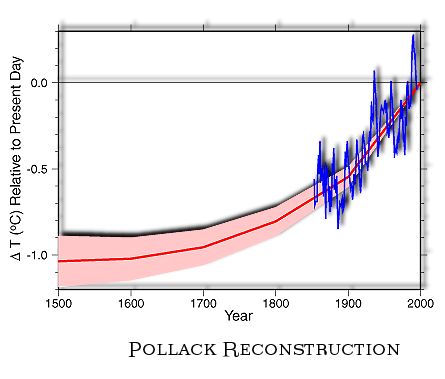
It is possible to make reconstructions of temperature much further back, using what are called proxy data. These include things like tree rings, ocean sediment, coral growth, layers in stalagmites, and others. The reconstructions available are all slightly different and provide sometimes more and sometimes less global versus regional coverage over the last one or two thousand years. Note: this covers what is often referred to as the Medieval Warm Period. As noted, all these reconstructions are different, but …
… they all show some similar patterns of temperature change over the last several centuries. Most striking is the fact that each record reveals that the 20th century is the warmest of the entire record, and that warming was most dramatic after 1920.
Thus, we can reasonably say it is warmer now than any other time in at least the last 1,000 years.
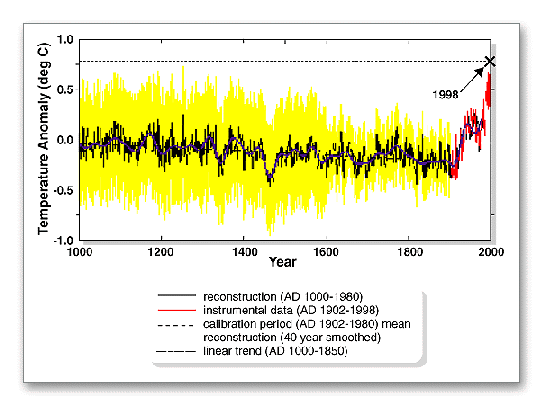
The only other candidate for a higher temperature period — going back through the entire Holocene (~10,000bp to now) — is called the Holocene Climatic Optimum some 6,000 years ago. It is not known exactly what the temperatures were then; the farther back in time we try to look, the greater the uncertainties. Even so, the Holocene Climatic Optimum has long been cautiously thought to be almost as warm or even warmer than now.
That conclusion is starting to look less likely, as it has been determined that the anomalous warmth of that time was actually confined to the northern hemisphere and occurred only in the summer months.
Robert Rohde’s website, Global Warming Art, has a nice graph of many reconstructions of Holocene temperature, regional and global, all super-imposed with an average of all of them combined, shown below. This represents the best estimate available of global temperatures in the Holocene.
Thus, we can reasonably believe it is warmer now than at any other time in at least the last 10,000 years.
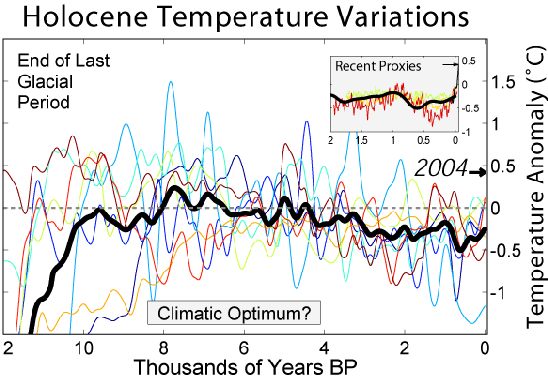
Before the current interglacial, the planet was in the grip of a much colder glacial period with ice sheets well down into the continental U.S. This period ended just some 11,000 years ago. The record of glacial-interglacial cycles can be read in Antarctic ice core analysis, and it shows these cycles over many 100Kyr periods. The IPCC offers a good version of this graph.
If our reading of the Holocene is correct, it is warmer now than at any other time in over the last 100,000 years.
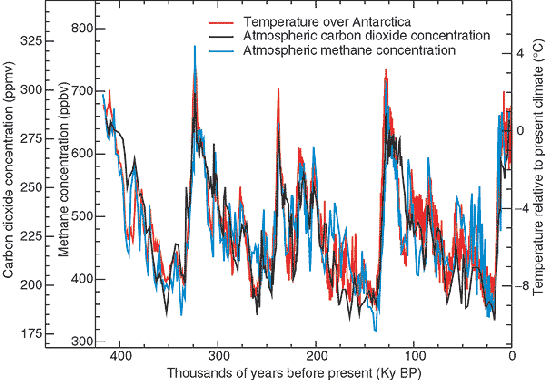
And that is a bit more than 100 years. It is, in fact, the entire history of our species.


